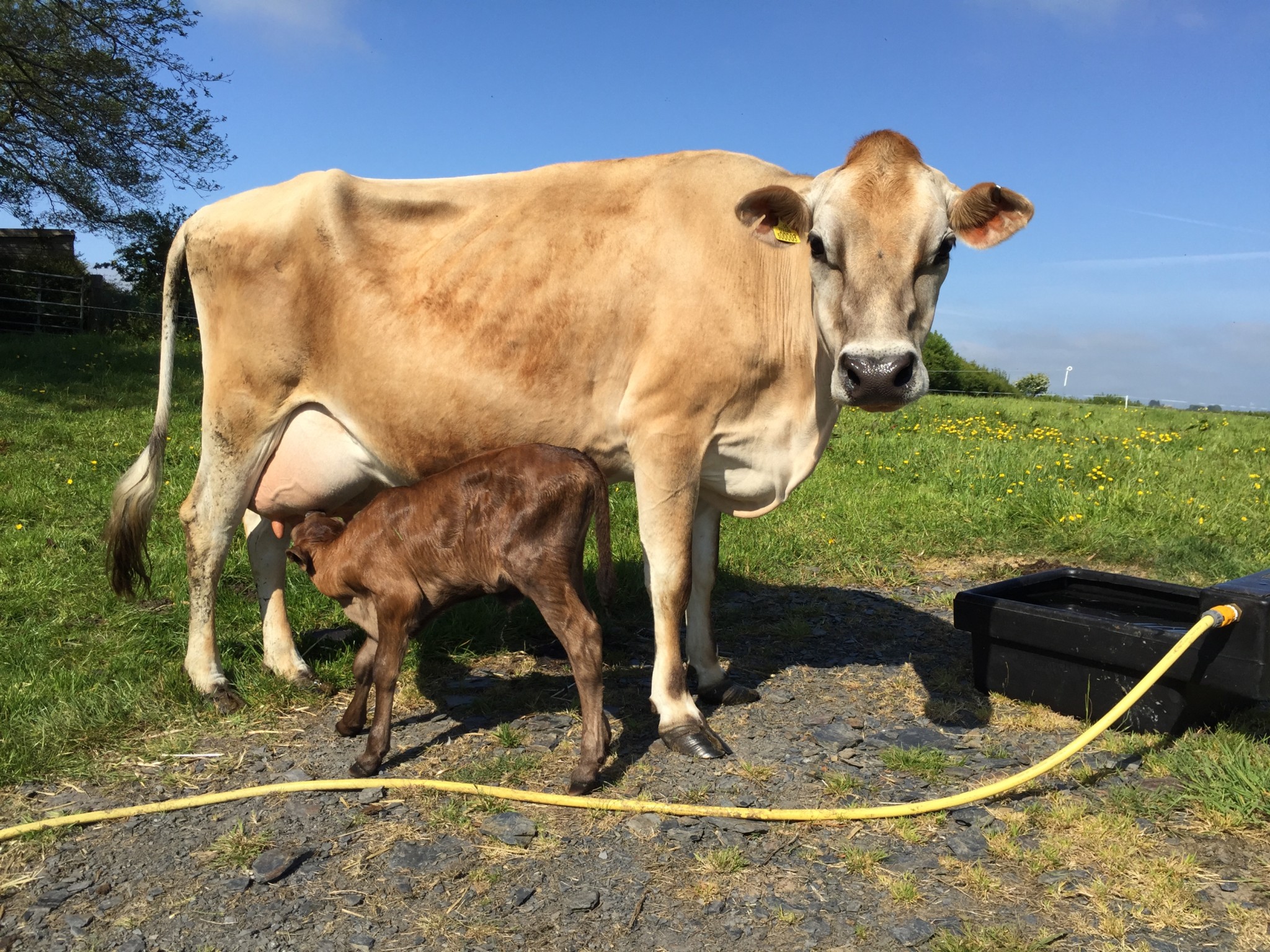It’s been a while since my last Indie Farmer post?—?that’s because the Summer has been entirely all-encompassing leaving little room for much else. This is a post about the early part of Summer, which revolved around the life-death-life cycle. Perhaps aptly I’ve only got around to posting this piece 9 months later.
Early summer was about life and death. Literally. It’s not an easy piece for me to write as in May my wife and I suffered a miscarriage at just a few days short of 12 weeks. The 12 week mark has a mythical feel about it, as it’s when people usually make their pregnancy known, as it’s said that’s when the risk drops. In fact, from around 9 weeks if there is a heartbeat then the risk drops to 1 in 500, not changing much at 12 weeks. It’s been a painful time, with the grief coming in waves, and at often unexpected moments. For us it’s been a grief of what we thought we were going to have rather than the death of something we had. It’s the death of dreams and plans. The death of a life that had not yet truly lived. We have grieved for someone we never even met. Still now we miss him or her.
Death strikes at the very core of our soul. And because we never know when it’s going to happen, being prepared is a must. Even if you do some research into the life insurance policies that companies like policyme offer, you’re planning ahead. Not the best thought in the world, but it has to be done.
It awakens us from our slumbers and dreams of invincibility and immortality. Grief tempers the ego and reminds me of my fallibility. Death is a reminder that we control little. You never know where it’s lurking, and until you’ve really experienced it you never even know that it really exists. 6 months later I thought I’d be free from the pain it caused. You think you’re done with it, and then it comes back for more of you. We think ahead to next time, and immediately we’re confronted with the fear that it could all happen again. Bringing new life into the world is fraught with frailty. And yet the cycle continues.
I felt the energy and motivation drain out of me following the miscarriage. Thoughts of us getting married in just 6 weeks scared me because I wondered where I would get the desire from to move forward with all of our plans. Everything felt a bit duller. And even now I realise there was a feeling I had when Sam was pregnant, that I will never recoup without her being pregnant again. Some sort of primal drive perhaps. We talked and cried and talked and cried together and we performed a simple, small ceremony later in the Summer whilst planting a fig tree (the baby was the size of a fig when it died) so that we would never forget its short un-lived life. Sam would now be 9 months pregnant.
This grief is intermingled too with my own feelings of guilt for still grieving. That I shouldn’t be grieving for this long over a miscarriage – I don’t feel like the grief I feel is justified or worthy. I know intellectually that it’s futile to compare. It’s a lose-lose game. Looking back I can now see that over the last 6 months we’ve been through the different stages of grief; denial, anger, bargaining, depression and now finally acceptance, I think. Looking after ourselves and each other has been a hard task because we just haven’t had the energy or desire to. It’s been a struggle. Even though it’s been a struggle, I feel like I’ve done my best to engage with the grief and not avoid it. It’s so easy to try to skip past it. To allow it to sit unexpressed and unexamined. I’ve tried that at times throughout the summer for sure. But I know ultimately that it’s important to sit with the grief, despite the complex emotions it stirs.
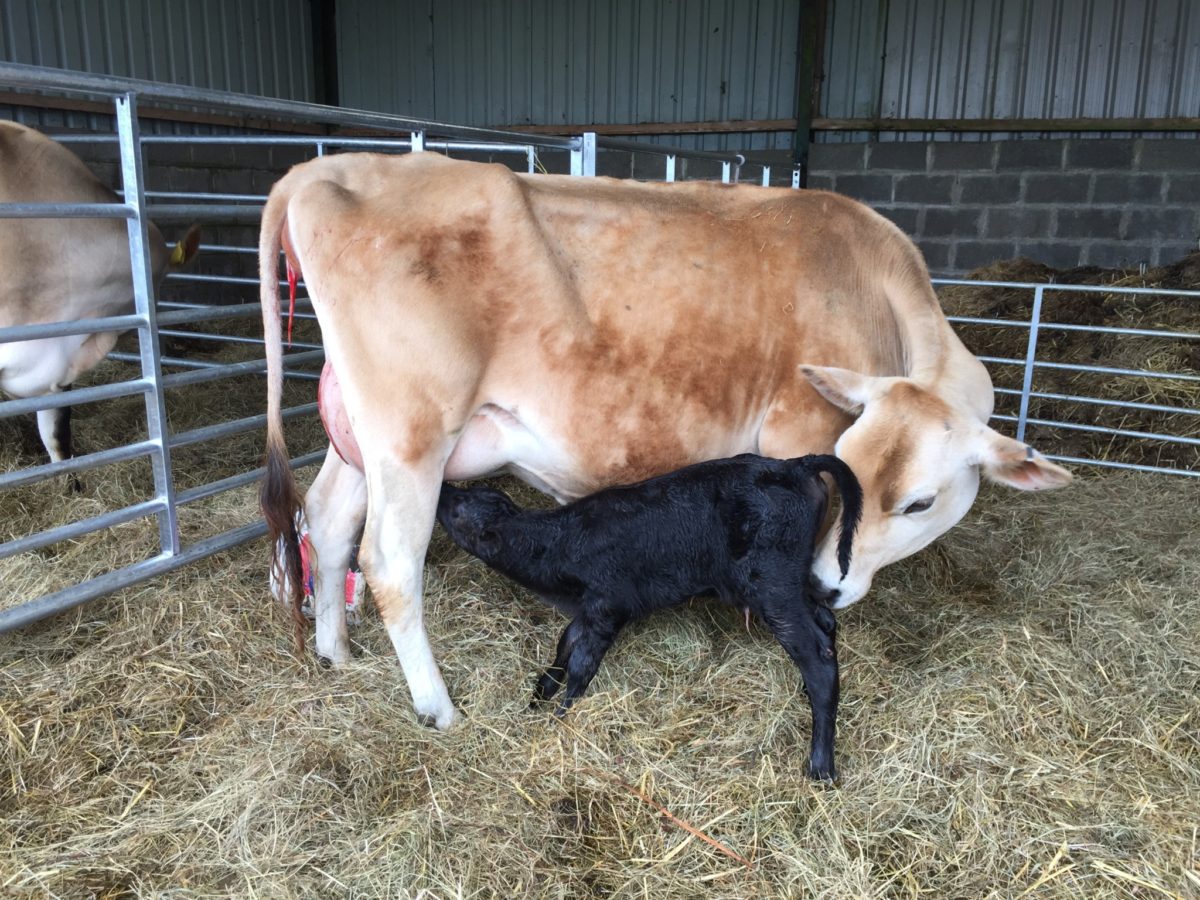
In the midst of our grieving, new life came along that spurred us and raised our spirits. Ruby, our Jersey heifer, had her first calf, a baby bull calf Max. We missed the calving but must’ve got there just minutes afterwards as Ruby was still busy enveloping her tongue around him, drying and warming him, before devouring her placenta, perhaps to reabsorb some of the nutrients passed on in pregnancy. He was a strong, healthy-looking calf that was quickly on his feet and suckling at his mother’s teat. This life came so symbolically for us, that from death comes life and the cycle continues, never ceasing or relaxing. It’s the very foundation of life. It’s the tension between life and death that keeps us alive. Literally and metaphorically. Life without death wouldn’t be living. The removal of humans from the arena of life and death has had a profound influence upon on our culture. We often value life too little and death too cheaply. They’re times that bring community together and initiate us into the deepest paradox of life.
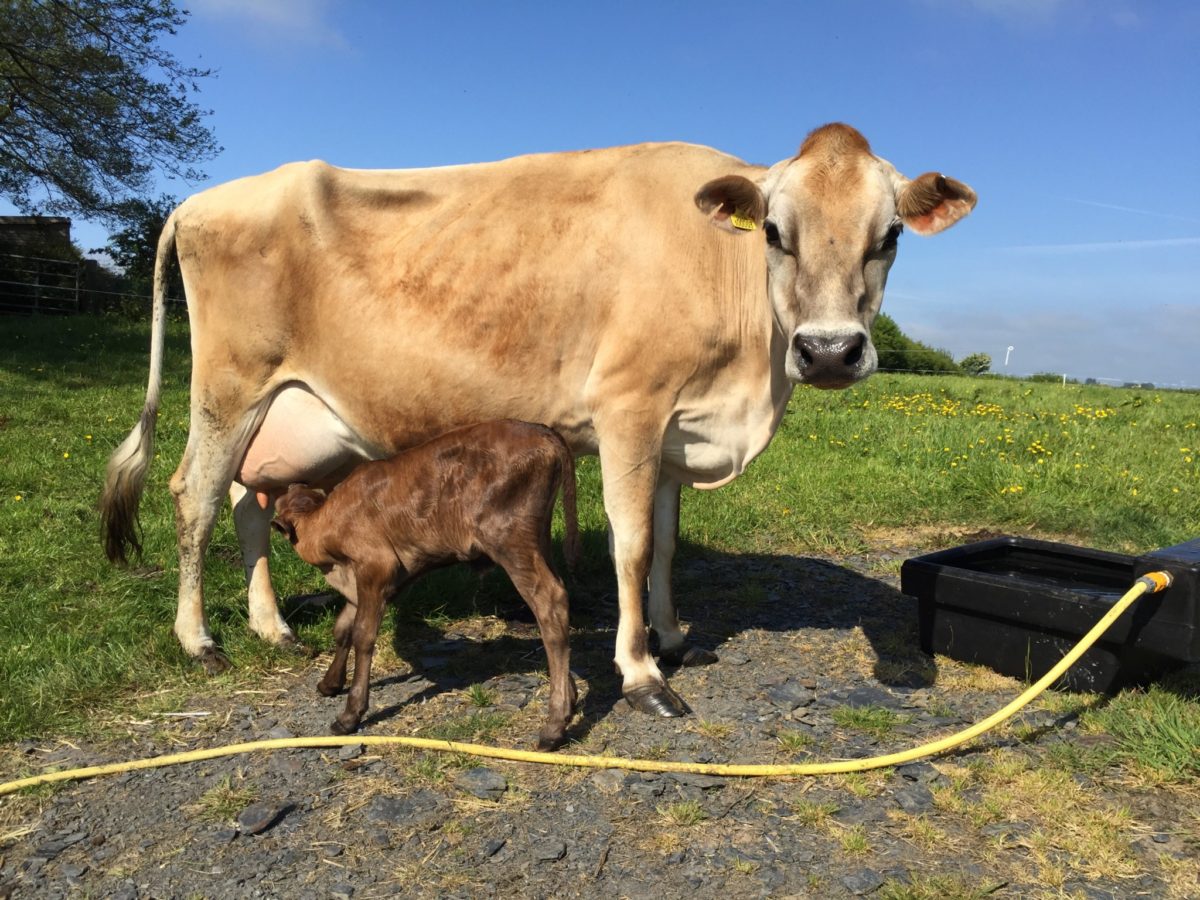
Following the birth of Max, 36 hours later during the cold night Ruby’s older sister Nelly calved too, this time a gorgeous little heifer calf Coco Caramel. Named thus as Sam said she looks the colour of chocolate and I was fond of the golden Jersey streaks that glimmered when the sun caught her loose, silky coat. She’s very much Max’s opposite. He’s bold and boisterous, she’s shy and subtle. She was a bit weak at first so we stayed with her and eventually held her to Nelly’s teat so that she could suckle that all-important colostrum to give her the strength she needed. We stayed with her till sunrise, making sure she fed and was able to move about. She shivered so we made a cosy bed of straw for her to settle down and cwtch up in. It wasn’t easy getting her to suckle?—?partly because Sam nor I had ever helped a calf suckle before, partly because she was largely to weak to hold her bodyweight and partly because Nelly felt no shyness in swinging her hoof in the direction of delicate little Coco’s head. Eventually I worked out that I had to actually get Nelly’s teat into her mouth and hold her body, head and Nelly’s teat at the same time to ensure she suckled. Thankfully we got there, with me kneeling in blood and manure. At 5am we decided to catch some sleep before getting up at 7am to start milking again for the first time in a few months.
A week after the calvings, we received the news that my grandmother, who had been unwell for 6 months, had got worse, so we went to visit her and see her for the last time. She passed away a few days later. It’s the first time I’d ever seen anyone on their death bed. Of course I was sad, but I was also happy that her suffering was now ending?—?it had been a difficult couple of years and a particularly difficult 6 months for her and her time had evidentally come. She’d lived a good, long life, and had known and affected many people in her time. Of the first generation of women to break free of the house-held tradition and to go to work and not be chained purely to domestic chores, which she balanced with having four children. She worked full-time well into her 70s, as a publican, having run several workingman’s clubs in her time. She was a warm, generous, kind, strong woman who will be missed but not forgotten. Known affectionately as the Matriarch.
Around this time too we went to an evening with Stephen Jenkinson and Gregory Hoskins, An Evening of Grief and Mystery?—?something we had booked months ago which turned out to be aptly-timed. It’s impossible to adequately convey his message and what I took from the evening?—?it will sound simple and crass. He spent his life in the ‘death trade’, as he calls it, working as a palliative care counsellor, spending the last few months with people with terminal diagnoses and their family, helping them to come to terms with and find a way to love those they’re letting go, and help those being left behind love those that are leaving. In a time of euphemism and transcendence of the Earthly realm of disease and death, he advocates candour and honesty. The more we understand and embrace death the more we can live. Like I said I can’t do him justice, but his perspective feels pertinent to me during these times. The less we can stomach death, the less we can breathe.
Death came to our steers too. It was my first time to take cattle off to slaughter, having only taken pigs thus far. This is what I do though. I rear animals with care, and then take them to slaughter with respect. Some will dislike that and heap judgement upon me and I’m not going to argue the ethics of it in the plain cold of the rational word. I’m not going to argue that it’s ‘right’ to kill an animal. I also don’t believe it’s ‘wrong’. I don’t feel the need to soothe my soul by constructing a strong intellectual argument to tell myself that what I’m doing must be right. It just is what is – in some ways good and in some ways bad. All I know is that I’m happier dealing with the consequences of my own actions. I’d like to perform the kill myself, and one day I’d like to learn how to, but to sell beef they have to go to an approved abattoir. Since then I’ve done the same trip to Tregaron a few more times. The same process each time of getting them in from the field, through the handling system and the chosen one or two into the trailer. Despite the muddying of my conscience, I was excited to eat our beef for the first time and we’re proud of the food we produce.
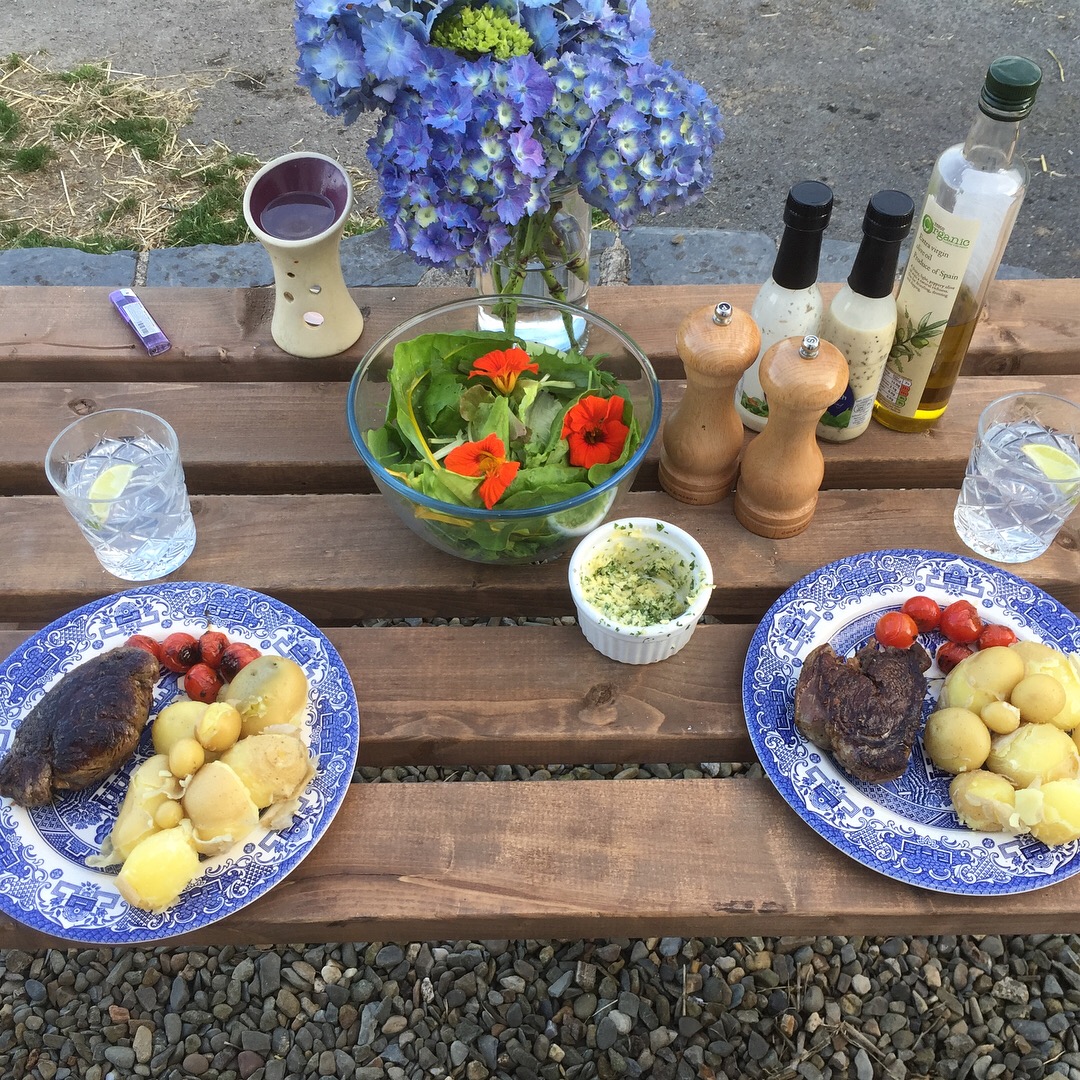
I can tell you now?—?and of course I’m biased?—?but it’s the best beef we’ve ever tasted! And we’ve been thrilled to receive praise from many of our customers, also saying it’s the best beef they’ve ever had. We can’t take the credit for that, it’s all down to the system. Slowly matured (24 months of age minimum), aged for 21 days, 100% grass-fed, traditional breed (Dexter Lowline Angus crosses) beef reared in a low-stress manner has a depth of flavour and tenderness that’s frankly missing from the standard beef most of us are accustomed to buying.
Death also came to one of our pigs?—?not through slaughter, but through illness. We believe they had pneumonia, probably caused by a freak change in weather from days of 12C changing overnight to 28C. We’ve been told that pigs don’t do well with extreme fluctuations of temperature. One of them survived it whilst the other keeled over, quite literally. I saw him under a tree in the morning, thinking he was shading himself from the heat, but then by evening realised he was wheezing. We got the vet out and we tried to treat him, but it was evidently too late?—?he seemed to be getting better for a day or so, but then the hot weather persisted and despite our attempts he died. That meant the first trip of the ‘knackerman’ to the farm. Basically he brings a lorry full of dead animals to come collect the body. Given that it had been nearly 30C for about a week, the back of the lorry stank from hundreds of yards away. It was a grim sight, but another reminder of the reality of livestock farming. I’d love to think he won’t need to visit here again, but I know it’s only a matter of time.
We’ve also recently lost many chickens?—?in total about 100. The first time it happened, we lost 50 over the course of two days, we believe to a mink or polecat, though we don’t know for sure. I went out in the evening to lock them up for the night to find bodies scattered everywhere with the head or throat ripped off. The next day, I went out in the middle of the day to top up their water, and found the majority of the rest taken. Belatedly perhaps we took the survivors into the barns. A young fox found a few more around the house. When we put them back outside, we lost several more. I was going out in the evening to lock them up and I was too late, as I saw a fox run away. We’re now down to about 40 chickens and are not planning to sell many eggs again. We’ve got more than enough on our plate to manage with the dairy and beef – perhaps one day we’ll come back to it.
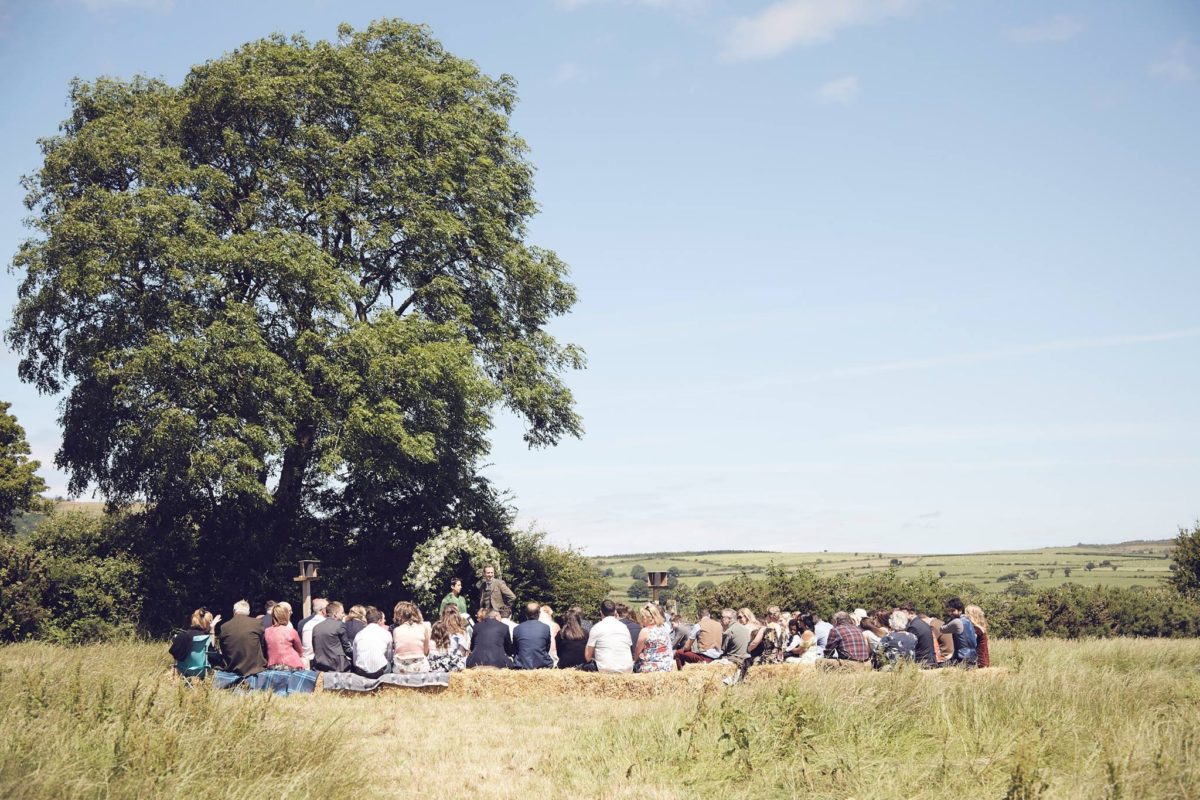
On a much happier note but continuing the theme we got married here on the farm on the 1st of July! It brought the end of one phase of our 12 year relationship, and the beginning of the next. The month of June meant intensely prepping for the wedding. Thanks to much help from friends and family we got there – in particular my now father-in-law. I must admit I was exhausted by the time the wedding came around and have spent the whole year trying to catch up. The whole week before it hammered down with rain, but thankfully on the day the sun came out strong and we were able to have our ceremony in the field, taken expertly by our dear friend Lizzie, with much help in the planning and prep from her fiancé Dick. We congregated on straw bales under a large ash tree beneath the majesty of the local ‘mountain’ Y Frenni Fawr. Afterwards we feasted on our own barbequed beef and pork and partied in the barn. Not only was it a wedding, but it was the welcoming to our farm of our nearest and dearest. I’m not going to attempt to put words to the day, because I frankly haven’t got them in me and what words I did have were shared on the day, and are impossible to rekindle now looking back. Nothing I can say now will do it justice. The speed at which it passed by is scary, but it was, clichéd as it is, the best day of our lives. All I can add is a massive, massive thank you to our friends and family for making the day what it was.
It was a turbulent summer for us. We had death to deal with coinciding with the busiest months on the farm we’ve had. We were exhausted, physically and emotionally, by all of it, but we made it through. We had the absolute highs and the absolute lows of our life. When we were in it, it was at times both painfully and ecstatically real. Looking back now, 6 months later, it’s hard to realise that it all happened to us, as it’s already taken on that unreachable dim gleam of the past. But summer has now passed and we spend our evenings in front of the fire.
Life, death, life. It cycles and continues regardless.



